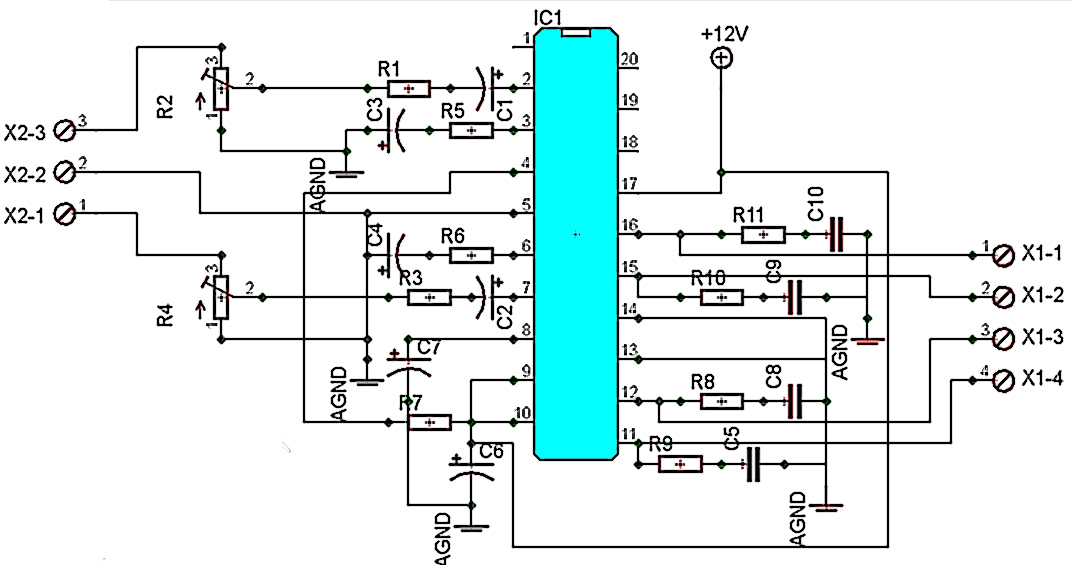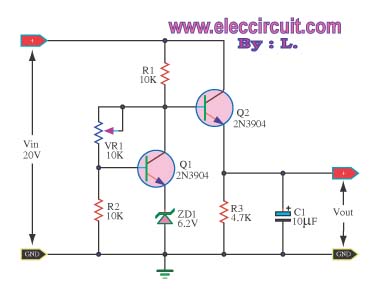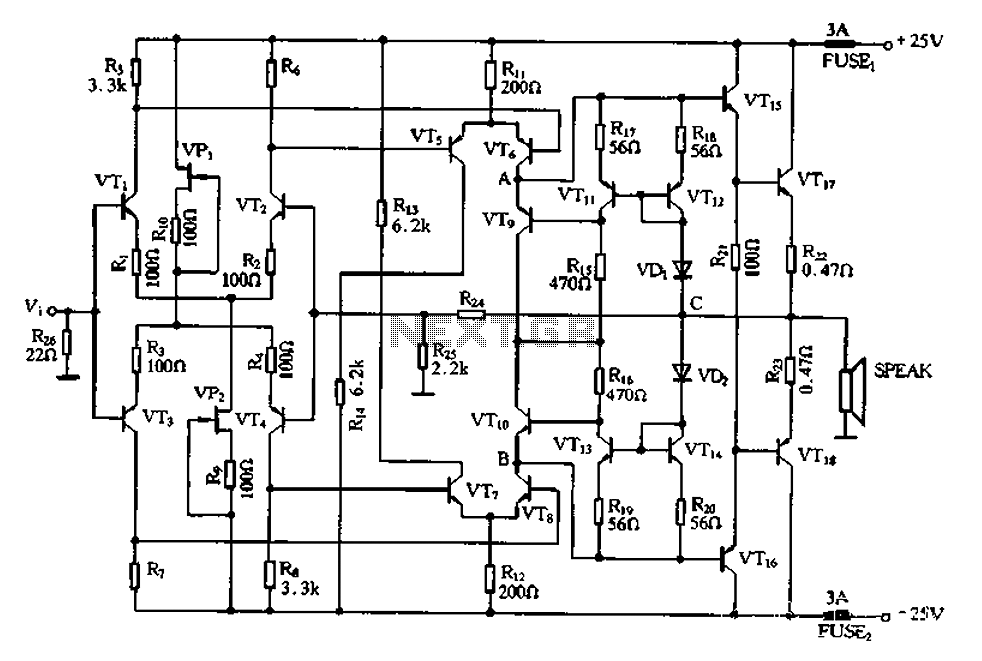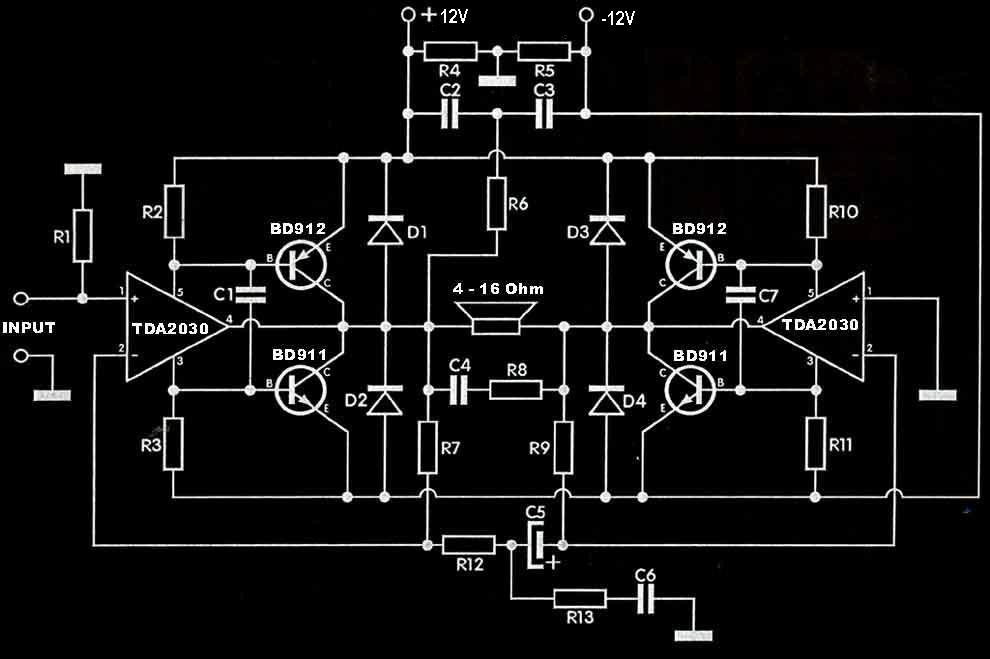
455Khz If Amplifier Circuit
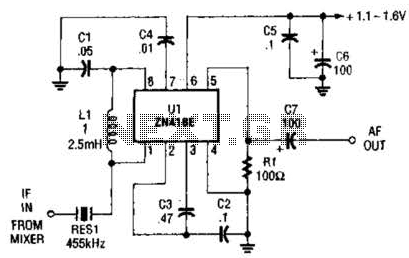
Up to 60 dB of gain at 455 kHz is available with the MC1350P. RES1 is a ceramic resonator, LC, or crystal filter. Keep the leads to pins 1, 2, 3, and 7 short.
The MC1350P is a versatile integrated circuit designed for RF amplification, particularly effective at a frequency of 455 kHz, where it can achieve a gain of up to 60 dB. This high level of gain makes it suitable for applications such as FM demodulation and other RF signal processing tasks. The device is commonly used in communication systems and can be paired with various passive components to enhance its performance.
In the circuit, RES1 serves as a frequency-selective element, which can be implemented as a ceramic resonator, an LC filter, or a crystal filter. Each of these components has distinct characteristics that can affect the overall performance of the circuit. A ceramic resonator is typically compact and cost-effective, while an LC filter provides flexibility in tuning and bandwidth. A crystal filter, on the other hand, offers high selectivity and stability, making it ideal for applications requiring precise frequency control.
It is crucial to maintain short leads to pins 1, 2, 3, and 7 of the MC1350P to minimize parasitic inductance and capacitance, which can degrade the performance of the amplifier. Short leads help ensure that the circuit operates within its intended frequency range, reducing the risk of unwanted oscillations and improving overall signal integrity.
When designing the schematic, attention should be paid to the layout to optimize performance. The placement of the MC1350P, RES1, and any additional components should facilitate minimal signal path lengths and proper grounding techniques. Bypass capacitors may also be included near the power supply pins to filter out noise and stabilize the voltage supply, further enhancing the reliability of the circuit. Up to 60 dB of gain at 455 kHz is available with the MC1350P. RES1 is a ceramic resonator, LC, or crystal filter. Keep the leads to pins, 1, 2,3, and 7 short. 🔗 External reference
The MC1350P is a versatile integrated circuit designed for RF amplification, particularly effective at a frequency of 455 kHz, where it can achieve a gain of up to 60 dB. This high level of gain makes it suitable for applications such as FM demodulation and other RF signal processing tasks. The device is commonly used in communication systems and can be paired with various passive components to enhance its performance.
In the circuit, RES1 serves as a frequency-selective element, which can be implemented as a ceramic resonator, an LC filter, or a crystal filter. Each of these components has distinct characteristics that can affect the overall performance of the circuit. A ceramic resonator is typically compact and cost-effective, while an LC filter provides flexibility in tuning and bandwidth. A crystal filter, on the other hand, offers high selectivity and stability, making it ideal for applications requiring precise frequency control.
It is crucial to maintain short leads to pins 1, 2, 3, and 7 of the MC1350P to minimize parasitic inductance and capacitance, which can degrade the performance of the amplifier. Short leads help ensure that the circuit operates within its intended frequency range, reducing the risk of unwanted oscillations and improving overall signal integrity.
When designing the schematic, attention should be paid to the layout to optimize performance. The placement of the MC1350P, RES1, and any additional components should facilitate minimal signal path lengths and proper grounding techniques. Bypass capacitors may also be included near the power supply pins to filter out noise and stabilize the voltage supply, further enhancing the reliability of the circuit. Up to 60 dB of gain at 455 kHz is available with the MC1350P. RES1 is a ceramic resonator, LC, or crystal filter. Keep the leads to pins, 1, 2,3, and 7 short. 🔗 External reference

